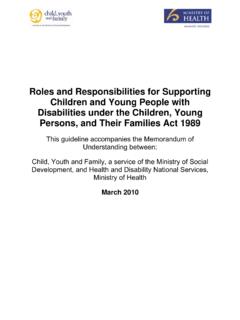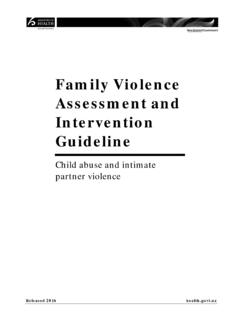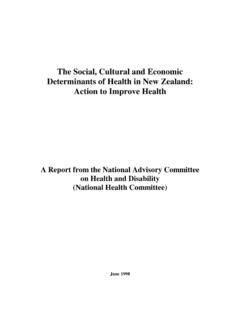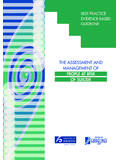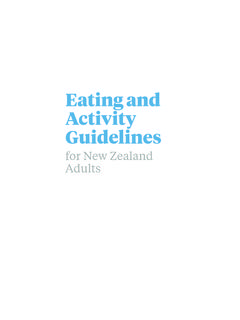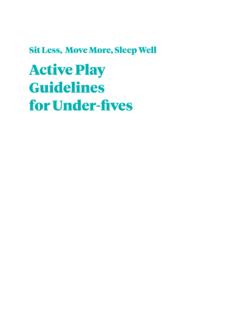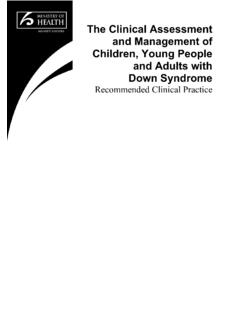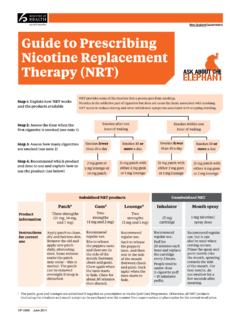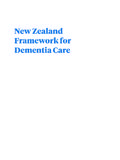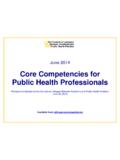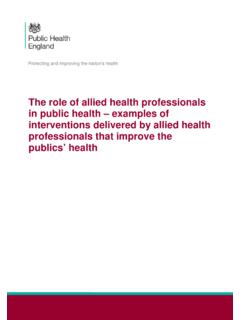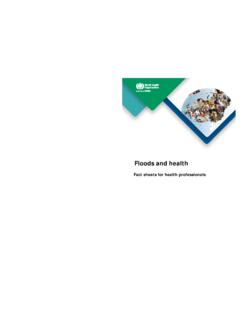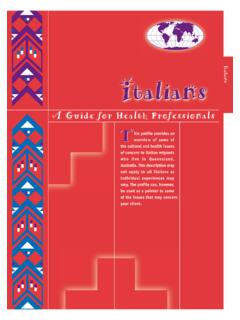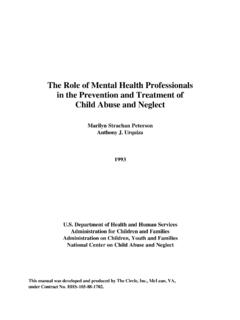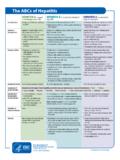Transcription of July 2010 Code HP5141 Health Professionals’ Notes
1 Measurement 11 Recording DateWeightHead CircumferenceLength/HeightLocationHealth worker name Please place sticker if available, otherwise write in space ..NHI No ..Date of birth ..When to measureLength or height should be measured at each Well Child/Tamariki Ora check or whenever there are any worries about a child s weight gain, growth or general Health . Head circumference should be measured to age measurements For babies born at term (37 weeks or later), plot each measurement on the relevant chart by drawing a small dot where a vertical line through the child s age crosses a horizontal line through the measured value. The lettering on the charts ( weight , length etc.) sits on the 50th centile, providing orientation for ease of birth weight (and, if measured, length and head circumference) at age 0 on the 0 1 year chart. The coloured arrows at age 0 represent UK birth weight data and show the child s birth gain in the early days varies a lot from baby to baby, so there are no lines on the chart between 0 and 2 weeks.
2 However, by 2 weeks of age most babies will be on a centile close to their birth preterm infants, use a separate low-birthweight chart for infants of less than 32 weeks gestation and any other infant requiring detailed assessment. For healthy infants born from 32 weeks and before 37 weeks, plot all measurements in the preterm section (to the left of the main 0 1 year chart) until 42 weeks gestation, then plot on the 0 1 year chart using gestational correction, as shown preterm section can also be used to assess the relative size of infants at the margin of term (eg, 37 weeks gestation), but these measurements should also be plotted at age 0 on the 0 1 year correctionPlot measurements at the child s actual age and then draw a line back the number of weeks the infant was preterm. Mark the spot with an arrow: this is the child s gestationally corrected centile. Gestational correction should continue until one year for infants born 32 to 36 weeks and two years for infants born before 32 terminologyInterpreting the chartAssessing weight loss after birthMost babies lose some weight after birth, but 80% will have regained this by 2 weeks of age.
3 Careful clinical assessment and evaluation of feeding technique is indicated when weight loss exceeds 10% or recovery of birth weight is slow. Percentage weight loss can be calculated as follows:Weight loss = current weight birth weightPercentage weight loss = Weight loss x 100% Birth weightFor example, a child born at who drops to at 5 days has lost 350g or 10%; in a baby born at , a 300g loss is 10%.What do the centiles mean?A single point on these charts indicates a child s size compared with children of the same age and maturity who have shown optimum growth. When there is more than one point, the chart shows how quickly a child is growing. The centile lines on the chart show the expected range of weights and heights (or lengths); each describes the number of children expected to be below that line (eg, 50% below 50th, 91% below the 91st). Children come in all shapes and sizes, but 99 out of 100 children who are growing optimally will be between the two outer lines ( and centiles); half will lie between the 25th and 75th centile very small or very big can sometimes be associated with underlying illness.
4 There is no single threshold below which a child s weight or height is definitely abnormal, but only 4 per 1000 children who are growing optimally are below the centile, so these children should be assessed at some point to exclude any problems. Those above the centile for height are almost always healthy. Also calculate BMI for children over 2 if weight and height centiles appear very different (more than two centile lines different).What is a normal rate of weight gain and growth?Babies do not all grow at the same rate, so a baby s weight often does not follow a particular centile line, especially in the first year. Weight is most likely to track within one centile space (the gap between two centile lines, see diagram). In infancy, acute illness can lead to sudden weight loss and a weight centile fall but on recovery the child s weight usually returns to its normal centile within 2 3 weeks.
5 However, a sustained drop through two or more weight centile spaces is unusual (fewer than 2% of infants) and should be carefully assessed by the primary care team, including measuring it is difficult to measure length and height accurately in pre-school children, successive measurements commonly show wide variation. If there are worries about growth, it is useful to measure on a few occasions over time; most healthy children will show a stable average position over time. Head circumference centiles usually track within a range of one centile space. After the first few weeks a drop or rise through two or more centile spaces is unusual (fewer than 1% of infants) and should be carefully do the length/height centiles change at 2 years?The growth standards show length data up to 2 years of age, and height from age 2 onwards. When a child is measured standing up, the spine is squashed a little, so their height is slightly less than their length; the centile lines shift down slightly at age 2 to allow for this.
6 It is important that this difference does not worry parents; what matters is whether the child continues to follow the same centile after the Professionals NotesBoys New Zealand World Health Organization Growth Chart 0 5 YearsPredicting adult height(Note that this is in the Health Professionals Notes , but not the Well Child/Tamariki Ora Healthbook.)Parents like to know how tall their child will be as an adult. The child s most recent height centile (aged 2 5 years) gives a good idea of this for healthy children. Plot this centile on the adult height predictor to the right of the height chart to find the average adult height for children on this centile. Four out of five children will have adult heights that are within 6cm above or below this height to BMI conversion chartBMI indicates how heavy a child is relative to his or her height and is the simplest measure of underweight or overweight from the age of 2, when height can be measured fairly accurately.
7 This chart3 provides an approximate BMI centile, accurate to a quarter of a centile space. DateAgeBMI CentileInstructions for use1. Read off the weight and height centiles from the growth Plot the weight centile (left axis) against the height centile (bottom axis) on the chart If between centiles, read across in this Read off the corresponding BMI centile from the slanting Record the centile with the date and child s age in the data a child over 2 years of age, the BMI centile is a better indicator of overweight or underweight than the weight centile; a child whose weight is average for their height will have a BMI between the 25th and 75th centiles, whatever their height centile. BMI above the 91st centile suggests that the child is overweight; a child above the 98th centile is very overweight (clinically obese). BMI below the 2nd centile is unusual and may reflect Cole TJ, Freeman JV, Preece MA. 1998. British 1990 growth reference centiles for weight, height, body mass index and head circumference fitted by maximum penalized likelihood.
8 Stat Med;17:407 Cole TJ. 2002. A chart to link child centiles of body mass index, weight and height. Eur J Clin Nutr;56:1194 information is based on original materials developed by and copyright 2009 Royal College of Paediatrics and Child Health , United Kingdom. It was adapted by the New Zealand Ministry of Health in July should use this chart?Anyone who measures a child, and/or plots or interprets charts, should be suitably trained or be supervised by someone qualified to do so. For further information and training materials see and growth chart for all childrenThis chart, which is suitable for use with New Zealand children up to age 5 years, combines World Health Organization (WHO) standards with United Kingdom preterm and birth data. The chart from 2 weeks to 5 years of age is based on the WHO growth standard, derived from measurements of healthy, non-deprived, breastfed children of mothers who did not The chart for birth measurements (32 42 weeks gestation) is based on British children measured around The charts depict a healthy pattern of growth that is desirable for all children, whether breastfed or formula fed, and of whatever ethnic and measuringWeight: use only clinical electronic scales in metric setting.
9 For children up to 2 years, remove all clothes and nappy; children older than 2 years should wear minimal clothing only. Always remove : (before 2 years of age): proper equipment is essential (length board or mat). Measurers should be trained. The child s shoes and nappy should be : (from 2 years): use a rigid rule with T piece, or stadiometer; the child s shoes should be circumference: use a narrow plastic or paper tape to measure where the head circumference is greatest. Any hat or bonnet should be removed. Be aware of cultural issues around touching to weighBabies should be weighed in the first week as part of the assessment of feeding. Recovery of birthweight usually occurs by 10 to 14 days, and indicates that feeding is effective and that the child is well. Once feeding is established, babies should usually be weighed at the time of routine checks. If there is concern, weigh more often; however, weights measured too close together are often misleading, so babies should not be routinely weighed more frequently than at each Well Child/Tamariki Ora check.
10 Data Recording (continued)Measurement 12 Recording DateWeightHead CircumferenceLength/HeightLocationHealth worker name Measurement 13 Recording DateWeightHead CircumferenceLength/HeightLocationHealth worker name Measurement 14 Recording DateWeightHead CircumferenceLength/HeightLocationHealth worker name Measurement 15 Recording DateWeightHead CircumferenceLength/HeightLocationHealth worker name Measurement 16 Recording DateWeightHead CircumferenceLength/HeightLocationHealth worker name Measurement 17 Recording DateWeightHead CircumferenceLength/HeightLocationHealth worker name Measurement 18 Recording DateWeightHead CircumferenceLength/HeightLocationHealth worker name (kg)1234567891011 Age in weeks/ monthsAge in weeks/ ageGestational age (7 weeks preterm)If the point is closer than of a centile space from a centile line they are described as being on that not they should be described as being between the two centiles: , 75th centile space is the distance betweentwo of the centile lines, or equivalentdistance if midway between for preterm infants(less than 37 weeks gestation).
